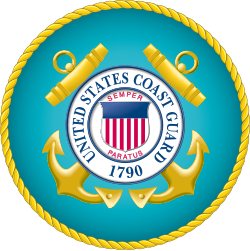| Coast Guard Station Point Allerton | |
|---|---|
| Part of 1st District | |
| Hull, Massachusetts | |
 | |
| Site information | |
| Type | Coast Guard Station |
| Owner | United States Coast Guard |
| Open to the public | Yes |
| Location | |
 | |
| Coordinates | 42°18′10.14″N70°54′48.14″W / 42.3028167°N 70.9133722°W |
| Site history | |
| In use | 1889-Present |
| Events | Portland Gale of 1898 |
United States Coast Guard Station Point Allerton is a United States Coast Guard station located in Hull, Massachusetts.
Contents
The station is a sub-unit of Sector Boston. It traces its roots back to the U.S. Lifesaving Station and the Massachusetts Humane Society. Its assets include the Motor Life Boat (MLB), the Coast Guard's 47-foot (14 m) primary heavy-weather boat used for search and rescue as well as law enforcement and homeland security, and Response Boat – Small (RB-S), a 29-foot (8.8 m) high-speed boat, for a variety of missions, including search and rescue, port security and law enforcement duties.

